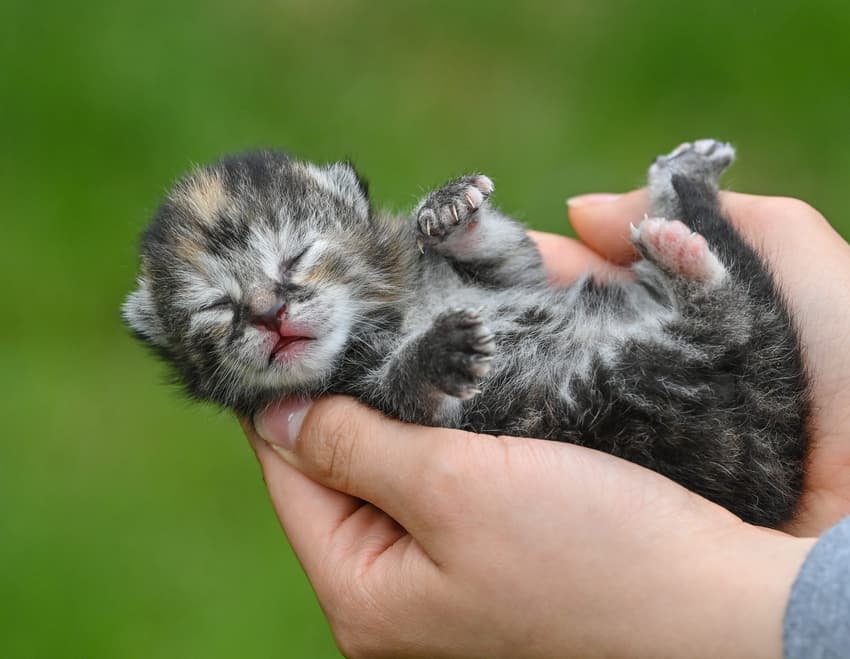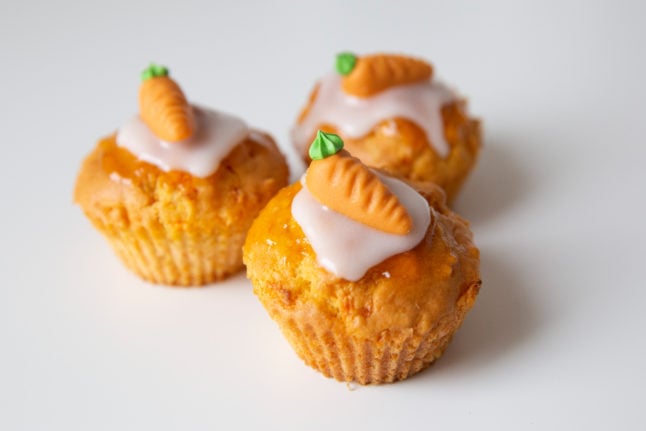Kätzchen and Büchlein: How to make German words smaller

German grammar is notoriously difficult. But the diminutive form – used to express a smaller version of the noun - is surprisingly straightforward.
Diminutives are forms of words that are used to express a smaller, younger or even cuter version of a noun. They are used a lot in German, so it's definitely worth getting to know how they work.
In English, words often become diminutive by adding the suffix -let (e.g. drop becomes droplet, book becomes booklet). In German, the diminutive form (also called die Verkleinerungsform) is made by adding either -chen or -lein to the end of the word:
das Tier → das Tierchen
the animal → the little animal
der Stern → das Sternchen
the star → the little star
READ ALSO: EXPLAINED: How to pick the right German language school for you
Nouns with a, o, and u change their vowel to ä, ö, and ü. The e at the end of the word is usually dropped.
die Katze → das Kätzchen
the cat → the kitten
die Torte → das Törtchen
the cake → the little cake
die Blume → das Blümchen
the flower → the little flower

A selection of little Törtchen on a table. Photo: picture alliance/dpa/dpa-tmn | Catherine Waibel
The diminutive with -lein is used for words ending in -ch:
der Tisch → das Tischlein
the table → the little table
das Buch → das Büchlein
the book → the little book
As you might have noticed, regardless of which gender the main noun is, the diminutive form is always neuter. See – told you it was simple!
Can you make any word a diminutive?
Pretty much. You can add the ending to any noun in German that is not itself a diminutive, e.g. Häschen (bunny) and Eichhörnchen (squirrel).
Common diminutives
There are many common German words that are diminutive, some of which you have probably been using without even realising it.
das Brötchen for example is the diminutive version of das Brot and means little bread.
das Mädchen, meaning girl, is actually a diminutive of the antiquated word die Magd meaning maid.
And lastly: Hallöchen! is a cute way to say hello there!
Comments
See Also
Diminutives are forms of words that are used to express a smaller, younger or even cuter version of a noun. They are used a lot in German, so it's definitely worth getting to know how they work.
In English, words often become diminutive by adding the suffix -let (e.g. drop becomes droplet, book becomes booklet). In German, the diminutive form (also called die Verkleinerungsform) is made by adding either -chen or -lein to the end of the word:
das Tier → das Tierchen
the animal → the little animal
der Stern → das Sternchen
the star → the little star
READ ALSO: EXPLAINED: How to pick the right German language school for you
Nouns with a, o, and u change their vowel to ä, ö, and ü. The e at the end of the word is usually dropped.
die Katze → das Kätzchen
the cat → the kitten
die Torte → das Törtchen
the cake → the little cake
die Blume → das Blümchen
the flower → the little flower

The diminutive with -lein is used for words ending in -ch:
der Tisch → das Tischlein
the table → the little table
das Buch → das Büchlein
the book → the little book
As you might have noticed, regardless of which gender the main noun is, the diminutive form is always neuter. See – told you it was simple!
Can you make any word a diminutive?
Pretty much. You can add the ending to any noun in German that is not itself a diminutive, e.g. Häschen (bunny) and Eichhörnchen (squirrel).
Common diminutives
There are many common German words that are diminutive, some of which you have probably been using without even realising it.
das Brötchen for example is the diminutive version of das Brot and means little bread.
das Mädchen, meaning girl, is actually a diminutive of the antiquated word die Magd meaning maid.
And lastly: Hallöchen! is a cute way to say hello there!
Join the conversation in our comments section below. Share your own views and experience and if you have a question or suggestion for our journalists then email us at [email protected].
Please keep comments civil, constructive and on topic – and make sure to read our terms of use before getting involved.
Please log in here to leave a comment.